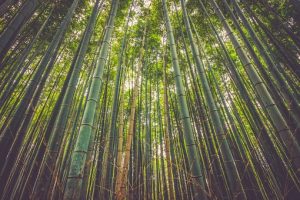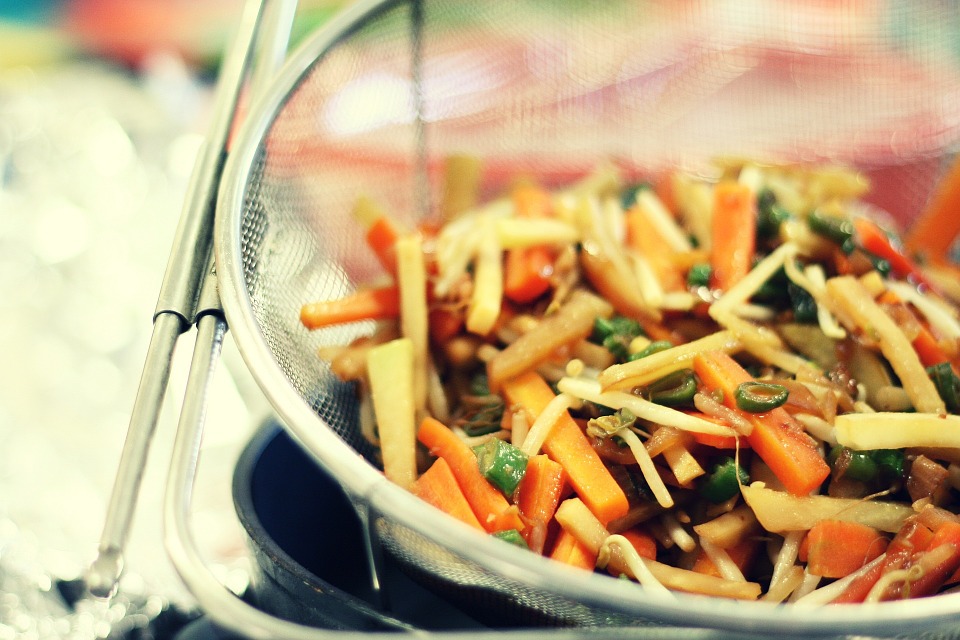Bamboo plants are some of the most graceful yet overlooked types of flora on Earth.
One of the best means of keeping them at bay is to harvest the shoots.
This article will provide information on how to grow edible bamboo shoots.
#1: The Different Types Of Bamboo With Edible Shoots
The tender shoots that have recently appeared are the edible part of a bamboo shoot. Similarly shaped to asparagus, the shoots are available from the spring season. There is a plethora of different bamboo species, all of which can be consumed. However, some of the shoots are more productive and tastier than others. Most bamboo plants produce a small amount of tough, bitter shoots and these need to be cooked for a prolonged period to be easily eaten.
If you have a bamboo plant on your property, all you need to do to harvest and prepare the shoots is follow the instructions below. Remember, all shoots need to be cooked before consumption as this helps neutralize any toxins in the bamboo plant. If you are planting bamboo specifically for consumption, it is recommended that you choose the type with the tastiest, most tender and abundant shoots.
The flavor of the shoot does not always correspond to its size; however, the larger the above-ground canes diameter, the larger the bamboo shoot and bigger the harvest. Different bamboo species are subject to a different level of cold tolerance. When making a choice for planting, it is important that you understand the climatic restrictions of the area.
All bamboo plants derive from the genus Phyllostachys. This species is known to be durable in the cold and producing high-quality bamboo shoots. Two of these plants are known for their exceptionally tasty shoots.
Known as the Moso Bamboo species, this plant has a height of approximately 50 feet and above. The canes of the plant measure approximately eight inches in diameter, and the plant is most common in Asia used as construction equipment and commercial food. The Moso Bamboo is also available in most American nurseries with a hardiness to stand 0 degrees Fahrenheit.
The Sweetshoot Bamboo is another form of popular Asian bamboo plant.

It is popular in the Asian shoot industry and has a hardiness to withstand o degrees Fahrenheit. The canes are approximately 40 feet high with three-inch diameter casing.
For a comprehensive view of the bamboo species’ different culinary qualities, it is recommended you review the list from the Guadua Bamboo Company. This examines 110 bamboo species describing 33 as “delicious”. Furthermore, there is mention of many other shoots in the Phyllostachys genus discussing their cold tolerance and cane diameter. For instance, the Acidosasa edulis has a 5-degree cold tolerance and 2.5 inches cane diameter. The Chimonobambusa has a 5-inch can diameter and its hardiness to cold varies. The Gigantochloa levis can withstand 30 degrees cold with a 6-inch diameter, and the Chimonocalamus delicatus has a 1-inch diameter withstanding 10 degrees.
The bamboo plants with the highest cold hardiness can be found in the Fargesia genus, including varieties that can withstand approximately -20 degrees. While this type of bamboo plant is not known for its culinary qualities, the Fargesia robusta and Fargesia spathacea are sometimes consumed.
#2: The Growing Conditions For Edible Bamboo Shoots
Essentially a giant type of grass, bamboo is simple to grow when planted in a well-drained area of rich soil – either in shaded or partly shaded locations. As with all grasses, bamboo plants are most lushly grown when provided with water. Moreover, the lusher the growth, the sweeter, more tender and more abundant the bamboo shoots. It is important to irrigate the bamboo when a top inch of soil becomes dry. You need to take care not to over-water the plant if soil drainage is poor. A waterlogged area is ineffective for bamboo growth.
As long as the plant is placed in fertile soil, there is no need to fertilize the bamboo. More shoots can be grown if the plant is fertilized with nitrogen-rich fertilizers. It may be tempting to fertilize the bamboo plant using animal manure based on its high nitrogen content; however, this is not recommended as the shoots can come into contact with different pathogens in the animal manure when emerging from the ground. Ideally, a store-bought organic fertilizer should be used.
#3: Preventing The Bamboo Plant From Spreading
In the bamboo plant arena, there are either “runners” or “clumpers”. Clumpers are not aggressive types of bamboo and merely grow in compact clumps. The runners are the form that gives bamboo a poor reputation. The runner species includes plants with long underground rhizomes sending up canes in different areas – an act known as colonizing the soil.
Unfortunately, the bamboo plants with the most effective culinary qualities are the runners. The positive news is that there are numerous ways of preventing the unwanted spread of running bamboo. The simplest method is to grow bamboo in pots or using raised planters. If you plan on growing bamboo in the ground, it is important that you install an underground polyethylene barrier – this will help prevent the bamboo from colonizing areas. The barrier should be approximately 4 inches above ground and 18 inches below the ground.
Evidence shows that underground bamboo barriers are difficult to install and costly; therefore, they are best suited to smaller plantings. If you plan on establishing a large bamboo grove, it is recommended that you surround the area with grass or similar vegetation which can be easily mowed. By mowing the vegetation, you will prevent the bamboo canes from growing outside of the designated planting area.
Another method of preventing spreading of bamboo is to harvest the shoots. As each shoot is removed, you prevent another bamboo cane from growing.
#4: Harvesting And Preparation Of Edible Bamboo Shoots
To ensure the harvest is successful, it is important that you follow these instructions:
Keeping An Eye On The Harvest
The first step to a successful bamboo harvest is to watch the plants during the harvesting season. All shoots need to be harvested immediately after emerging from the ground. Species with small diameter measurements must be harvested before the shoot is 6 inches in length. The bamboo species with larger diameters can grow to 12 inches. Consequentially, the younger and shorter the shoot, the better it will taste. Evidence shows that bamboo can grow at a rate of 6 to 12 inches per day. This means the ideal harvest window for all shoots is less than 24 hours.
Harvesting The Shoots By Slicing Into The Soil
You can harvest bamboo shoots by slicing into the soil using a sharp spade. This act can help detach shoots from the bamboo root system. Bamboo shoots with large cane diameters and stiff, brittle shoots are easier to break off through manual twisting and pulling. It is recommended that you harvest only 50% of the shoots per annum to ensure all the canes are healthy.
Peeling The Outer Sheath
Each shoot presents with dark outer sheaths protecting the white interior. To reach this soft interior, it is recommended that you peel the dark sheath away.

